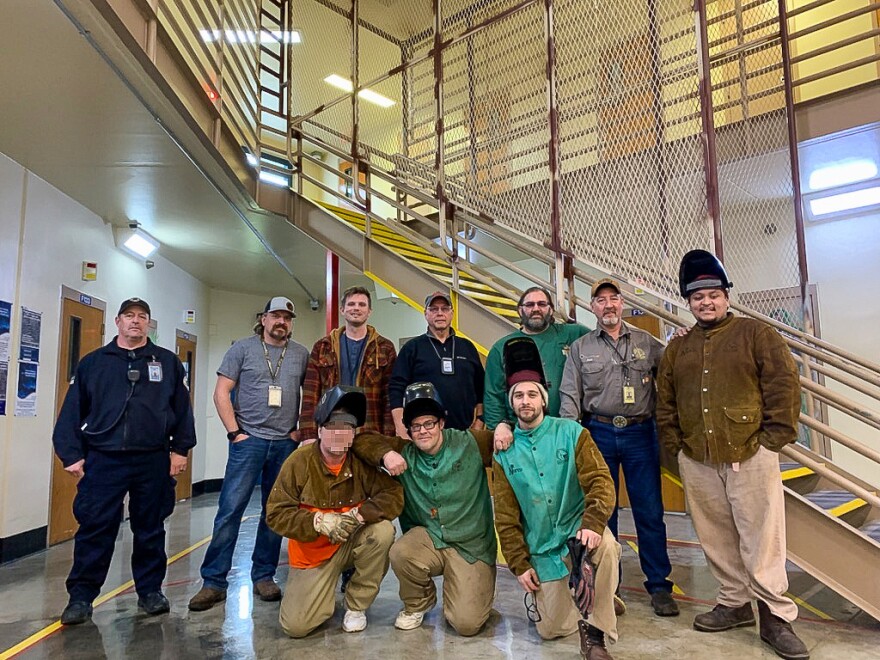Last June, three Washington prison inmates took their own lives in less than a week. Two of the three jumped to their deaths.
The state Department of Corrections wanted to make it harder for people to leap. The agency called on a welding instructor in Walla Walla and his students to make it happen.
Dan Aschenbrenner works for Walla Walla Community College, but his classroom is behind the walls of the Washington State Penitentiary.
“It almost looks like a warehouse, but it’s completely full of welding equipment. You know, I’ve got about 24 welding booths here,” he said.
That’s just about enough for his cadre of 20 students. He teaches them a wide variety of techniques and they practice in the booths.
Last fall, the Department of Corrections asked him to lead a project to build metal cages that could be fitted around staircases at the Monroe Correctional Facility, north of Seattle.
“The idea came about to use the community college here to help, my students, the ones that could qualify, to actually go out, transfer to a different facility, which was Monroe, clear across the state and be housed there for two-and-a-half weeks," he said.
Aschenbrenner says it was quite a bureaucratic feat to get the plans approved and secure permission to transfer the inmates. When it came together, he picked five of his best students, including Brandon Blum.

“We had blueprints that our instructor and the fix-it shop lead guy had and brought ‘em into our school and we started fabricating all these panels for this project. From start to finish, it took us about a month, six weeks, of just cutting metal, welding them together, standing them, painting them, getting them all ready to go," he said.
Then it was time to ship the panels — and the inmates — across the state.
“We worked 12 days straight, 12-hour days, putting them up and erecting them and I was up on a lift most of the time, on the second floor, up in a scissor lift, welding out of position, and it was on-the-job training, real on-the-job training," Blum said.
They slept in a minimum-security section at Monroe. Blum says he and his colleagues were treated well, like professionals, rather than inmates. They later received letters of thanks from corrections department officials.
“They were ecstatic and they’re still talking about it," Aschenbrenner said. "They talked with all the other students and it just creates all this positive hype and, who knows, it might happen again.”
Chris Wright, a spokesman for the Corrections Department, confirms that.
“I think it’s important to point out that, agency-wide, there’s a focus on this training, on jobs like welding, the trades. That also helps reduce the recidivism rates. Guys can get out. If they stick with welding, there’s incredible demand for these jobs, a lot of jobs that pay well, that people don’t want to do because they’re hard," he said.
For Brandon Blum, the safety barriers project was a chance to work on something important, to get out of his usual environment and experience something new. But it was also positive for another reason.
"My teacher and the guys over in the fix-it shop and also headquarters, who was doing the screening, obviously saw something in me that they liked, that they felt safe enough for me to even go over there into those units where the men are very sick. So that felt good," he said.
Blum hopes to pursue a welding career after he’s released.
“For many of them, this is the first time they’ve really ever had an opportunity to work in a trade and understand that this is not something that is not just your normal job where you labor or whatever," Aschenbrenner said.
"You’ve learned a trade and it just keeps expanding as you gain that experience. It’s just a win-win, I think, for DOC, for my class, for my students that went and the taxpayers as well."


